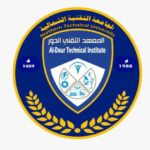Department of Mechanical Technologies

The department was established since the beginning of the establishment of the Institute in 1988, and the department receives students from the graduates of the preparatory study of the scientific branch (applied and biology) and the professional study of the industrial branch only and of both sexes and students are trained in the industrial workshops of the department and aims to prepare middle cadres of technical diploma holders. Students also receive focused training for two months in various industrial establishments located in Salah al-Din Governorate. The department includes several scientific laboratories that meet the scientific aspect of the curriculum, namely (M. Metals, M. Mechanics and Electricity, M. Computer, M. Measurements) as well as workshops (machinery, turning, carpentry, welding, plumbing, and chips)


Objective
The Department prepares and prepares the graduate and provides him with theoretical, applied and practical information to be able to carry out the work assigned to him.
Vision
The Department of mechanics is one of the main technological departments and the department is moving towards expanding the base of technical education and its modern applications to be a leader in providing certified technical services in a spirit of competition and cooperation with society.
Mission
The Department of Mechanics adopts a general message based in its general form on the framework of technical education in Iraq, a message that it seeks to achieve every year and does not highlight the face of discrimination for the department. The general objectives are focused on graduating technical cadres at a level of education and training that are able to absorb technology systems and support the process of technical development to keep pace with rapid global technical developments. The private message includes:
1- The use of computer and Internet technologies in education and training.
2- Activating the relationship with the private sector in the fields of training.
3- Follow-up development of the curricula of training plans and then update laboratories and workshops.
4- Interaction with the labor market and the needs of society in rehabilitation and training.

To contact the department
mech.dep@ntu.edu.iq










